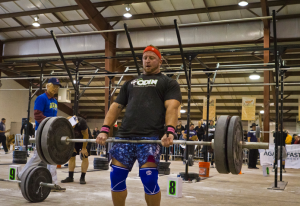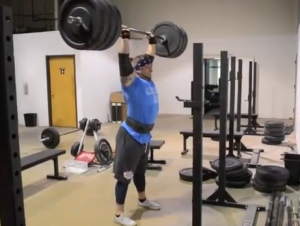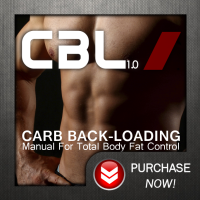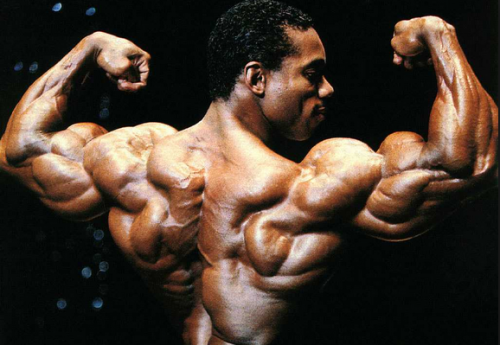By Scott Paltos
Want the secret to everything? I know you’re looking for it, at least for your fitness, because that’s why you’re on the fucking internet today in the first place. I’m also sorry to disappoint you, because the answers you’re so desperate to find have nothing to do with any of the other bullshit you’re seeing everywhere you look.
The secret to getting your ass in shape to perform, either for aesthetics or athleticism, is strength. Strength comes first, always and forever. Before you decide to specialize in anything, whether it’s CrossFit, powerlifting, or any other sport, your training needs to build some type of strength foundation. If it doesn’t, you’re falling further behind every day.
Why Strength?
Strength builds muscle, and muscle builds strength. Muscle keeps us lean, and it keeps us from aging. Having muscle is how we burn fat, and it’s what makes the human body aesthetically pleasing. If you don’t focus on strength as your primary goal, you won’t have any stability, you won’t have mobility, and you won’t have the proper platform from which you can try all the other shit you want to try—like CrossFit, MMA, or strongman training. Muscle gives you strength, strength keeps you young, and the only way to get either thing—muscle or strength—is to train for it.
Are You Nervous?
The number one, most efficient way for any of us to get stronger, and better, is to stimulate the central nervous system (CNS). If you’re a performance athlete, this is how your performance improves. If you’re a regular gym rat, this is what guides your training to make sure you’re moving in the right direction. Sure, what I’m saying is very basic, but the role of strength in our programming is something we’re constantly both overcomplicating and overlooking.
We’ve reached a point in the fitness industry where the basics are being disguised by bullshit—and by basics, I’m talking about movements that stimulate the central nervous system (CNS), build strength, and get people moving efficiently. There’s really no trick to this, despite what you’ve been told. I’ll show you the general idea of how I program this for myself and for my clients later on, but for now, just be mindful of the fact that I’m looking to simplify this shit and emphasize the importance of simple, brutal strength.
Hypertrophy, or mass and muscle-building, is a secondary concern in this vein. That’s essentially the easy part, and it’s accomplished through time under tension and a diet system like Carb Back-Loading. My clients don’t want to get huge, though, so that’s not what we’re training for. Rather, our goal is to put the CNS to the test by incorporating lots of power-based lifts and movements.
The balance between CNS stimulation and hypertrophy work for strength varies based on the individual. The primary factor for most people will be the stimulation of the CNS. That’s going to account for close to 75 percent of the work you’ll need to do. The idea, then, is to stimulate your CNS the right way without overdoing it. The remainder of the training, the 25 percent left over, consists of your hypertrophic muscle-building work. This is where you’ll add some isolation exercises, working your weak points and lagging body parts.
How I Do It
 When a client walks through the doors of my facility for the first time, especially a new male or female client that hasn’t previously done any serious strength training, the idea is to teach them how to move properly by introducing them to movements they’ve never done before. I’m a huge fan of Olympic lifting. I love the clean, the clean and jerk, and the snatch—although the snatch is a fairly high-level move that needs to be coached very carefully, which isn’t always easy to do in a CrossFit-style group setting. I also love powerlifting and strongman, too, so the deadlift, squat, and bench press are integral to my programming, as well.
When a client walks through the doors of my facility for the first time, especially a new male or female client that hasn’t previously done any serious strength training, the idea is to teach them how to move properly by introducing them to movements they’ve never done before. I’m a huge fan of Olympic lifting. I love the clean, the clean and jerk, and the snatch—although the snatch is a fairly high-level move that needs to be coached very carefully, which isn’t always easy to do in a CrossFit-style group setting. I also love powerlifting and strongman, too, so the deadlift, squat, and bench press are integral to my programming, as well.
Given all these options, it sounds like we have a lot on our collective plate: Three big moves for Olympic lifting, three big moves for powerlifting, plus a whole slew of strongman events (provided you’re training in a gym where it’s available to you). How do we manage everything on this menu?
Instead of getting overwhelmed with all these choices, we’ll simply pick three or four things to build from, and start from there. These are our foundational movements. We’ll spend at least a week, and typically two, just teaching people how to perform these moves correctly.
When in Doubt, Teach
One thing I hate is when trainers try to impress their clients with a bunch of bullshit bells and whistles, thinking this is the only way to get them in the door and keep them there. You don’t need to razzle-dazzle your clients with all sorts of flashy shit. I’ve found it best to simply explain what we’re doing, and why we’re doing it. People appreciate this. Say, “This is what you’re going to do, this is how you’re going to do it safely, and this is why you’re doing it.”
You can’t overload people—or yourself—with information. Start with a few simple moves, then take a couple of weeks to really learn them. Get an idea of what you’re actually trying to accomplish during this period. Once you’ve mastered these first introductory moves, then you can start adding things to your program. Put some weight in your hands, make sure you’re doing things right—or, if you’re a trainer, make sure your clients are doing everything with perfect technique—and pay attention to every detail.
How Strong Do I Need To Be?
You’re never strong enough. If you’re honest with yourself, you’ll always be able to find weaknesses. The key for me, both personally and with my clients, is to keep a very close watch on what’s safe and unsafe. Anyone can compete in a CrossFit Open or a powerlifting meet, but the best thing you can do to prepare for these things is to have a coach who knows whether you’re safe or not. There has to be someone who sets some kind of tangible goal or outcome for you, and who knows for sure whether you’re on track to hit it safely or not.
 For example, if you’re capable of pressing 100 pounds over your head for 10-15 reps, and your load in a competition is going to be 135, your coach will know whether you’ll be okay or not. Maybe you haven’t pressed that much weight before, and it’s going to be difficult—or maybe you’ll even have to devise a strategy for working up to it—but if I’ve seen you train before, I’ll know whether this is safe and realistic for you or not. Safety is the most important consideration when you’re trying to figure out how strong you actually are.
For example, if you’re capable of pressing 100 pounds over your head for 10-15 reps, and your load in a competition is going to be 135, your coach will know whether you’ll be okay or not. Maybe you haven’t pressed that much weight before, and it’s going to be difficult—or maybe you’ll even have to devise a strategy for working up to it—but if I’ve seen you train before, I’ll know whether this is safe and realistic for you or not. Safety is the most important consideration when you’re trying to figure out how strong you actually are.
When I played football, however, there came a point where strength only went so far. If you do too much to increase your strength, you’ll end up with so much size that it affects your ability to move properly—and too much strength training will detract from the other motor abilities necessary for success. With CrossFit, I’m not entirely sure whether we’ve hit that limit yet. The top of the sport is a young people’s domain, so I don’t think any of the top CrossFit Games athletes have developed their strength to the point where they’re about to hit any type of ceiling.
With bigger athletes, strength may become a bit of a problem, because too much of it will necessitate the packing on of too much muscle mass, leading to decreased range of motion and a lack of mobility. That won’t take you very far in any CrossFit competition, but again, I don’t think we’re at that point yet. What you need to decide here is what your ultimate goal is. Are you training for a specific series of events? Then get good at them. Are you training simply because you enjoy training? Then you’re likely nowhere near your ceiling, and you need to just get stronger.
How to Program It
I’ve said this before, but it bears repeating: Strength training needs to be built into your programming on a consistent basis. There needs to be some level of continuity, and your training shouldn’t be flushed down the toilet simply because you have a competition coming up. This takes discipline, but you need this kind of consistency, and it needs to be monitored and periodized.
For my clients, and for myself, I work this type of power-based training in a minimum of 3-4 times per week. For our three or four day week, we take the following approach:
DAY ONE: OLYMPIC LIFTING
We’ll always hit one heavy weightlifting movement each week. This will be a heavy snatch, or a heavy clean and jerk. When we involve the jerk, this usually means it’s an overhead day, so we’ll throw in some other volume there, too.
DAY TWO: SQUAT VARIATION
This can be a front squat, a back squat, a high bar squat, or whatever else you’re working on in your programming at the time. I’m not a huge believer in deadlifting heavy all the time, because it fries your CNS and you can’t recover from it quickly. I’ve backed off on deadlifting quite a bit. Instead, we’ll do a lot of posterior chain work that’s heavier in both load and volume.
DAYS THREE AND/OR FOUR: MIX AND MATCH
On these days, we’ll throw in a variety of work. Sometimes we’ll do a day of strongman training. Other times, we’ll bench press—and yes, no matter what anyone says, I still love the bench press. Occasionally we’ll combine things here, doing squat/bench sessions, but we’re always careful not to overtax the CNS with too much work.
What is Heavy?
The trouble with adding strength training to any CrossFit-style programming is that a lot of coaches believe that building up to heavy lifting automatically involves one-rep maxes, doubles, or triples. This, however, isn’t the case. You can build up to a max in virtually any rep range. We’ll work as high as an 8-rep max in certain lifts, and we can wave this up or down as we go along. Again, it all depends on where you are in your programming cycle, but strength doesn’t necessarily entail absolute one-rep max ability with these main lifts.
The Power of Consistency
This article presents a simplified, general overview of why strength is important. This approach has worked for me, and it works for my clients. This, however, doesn’t mean should scrap whatever you’re doing and try all of this tomorrow. I don’t want you to do that, because if you’re willing to give up so easily on what you’re doing now, then maybe if Jesse Burdick and Brian Carroll come up with something here next week that appeals to you, you’ll bail out on me after a week and start doing something else entirely.
You have to stick to something—and sticking to it doesn’t mean trying a program for 2-4 weeks. That shit only works in magazines. Not in the real world. You have to give a program at least 12-16 weeks, and nothing’s going to show you any results before at least 6-8 weeks. That’s why certain programs that tell you to underestimate your maxes—like 5/3/1, which I really like—are so popular with novice trainees: because these programs give you the continuous impression that you’re making progress, even when you’re not.
The same holds true for stuff like P90X, Zumba, and even Tae Bo. If the average guy pays attention to P90X, sticks to it, and plays by the rules, he’s going to get something out of it. Will it be ideal? No, but you’re going to improve, and it’s going to be good for you—but only if you believe in it and stick with it. That’s how strength training works once you transition into real strength and conditioning. Strength needs to have a prominent place in your training, and it needs to stay there forever.








Recent Comments